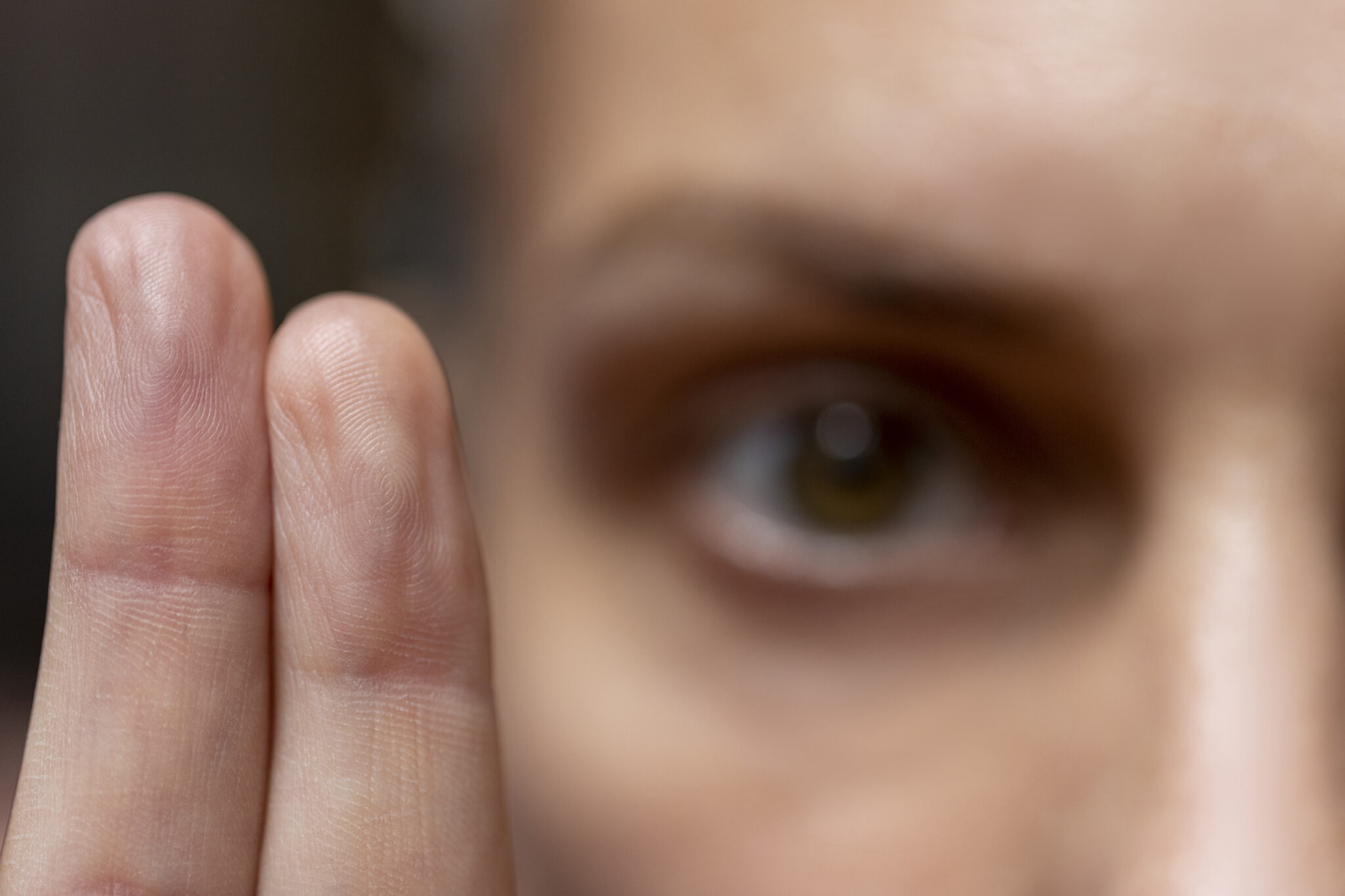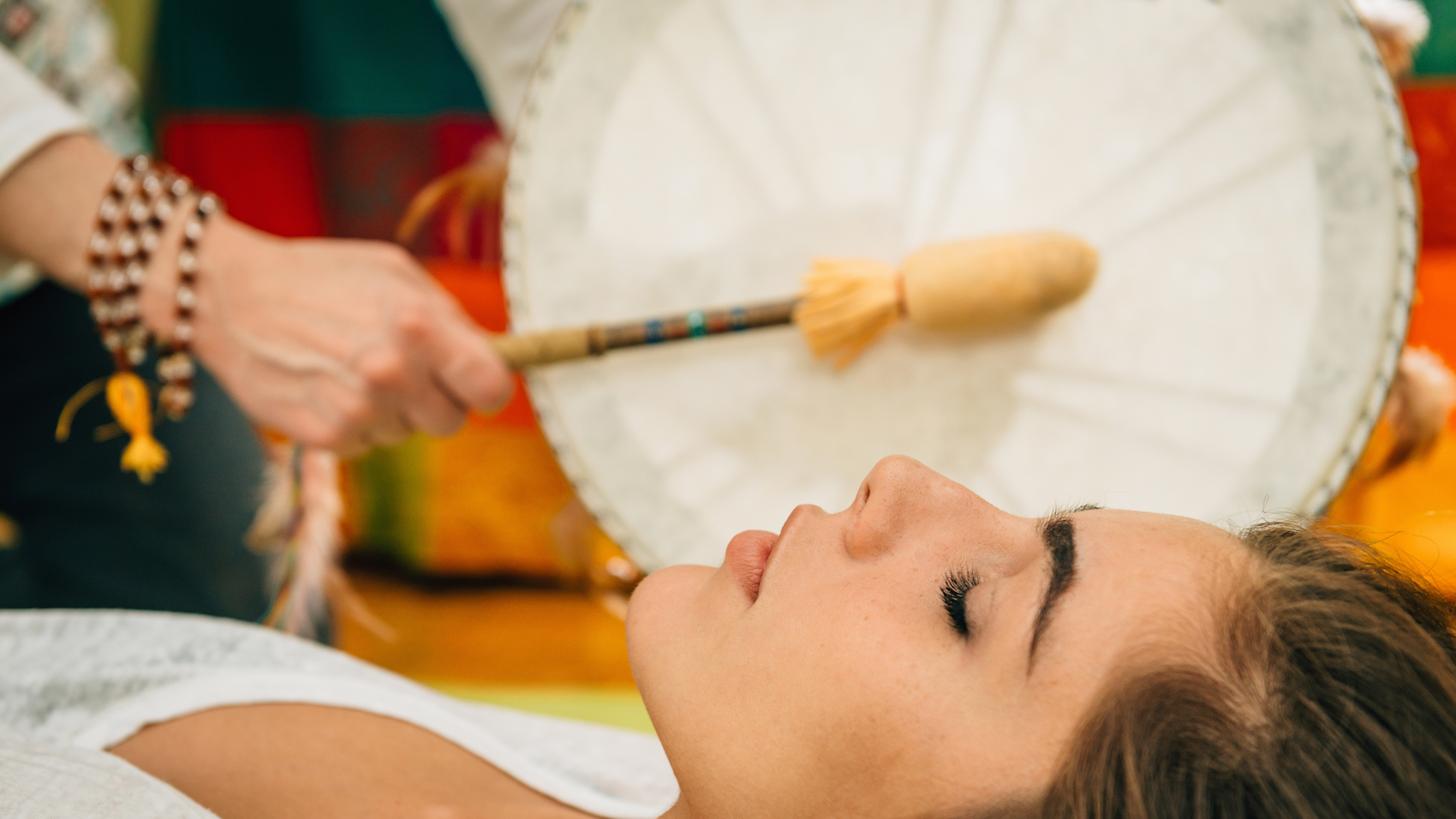Mindfulness



What is it?
Have you ever caught yourself doing things on autopilot? Maybe driving mindlessly while thinking about future (or past) events? Perhaps even having a conversation while really fretting about a variety of topics? In either case, you are not focusing on your current experience, and you are not really in touch with the “here and now.”
Mindfulness is defined as a state of being where you are tuned in to your body and your environment. It’s the practice of paying attention to just one thing; it’s being in the moment and aware of what you are doing. Mindfulness expert Jon Kabat-Zinn defines mindfulness as “moment-to-moment, non-judgmental awareness, cultivated by paying attention in a specific way, that is, in the present moment, and as non-reactively, as non-judgmentally, and as openheartedly as possible.”
Many describe mindfulness as a basic human ability, yet very hard to master in today’s environment. When you are mindful, you are present and you can enjoy each moment more. A simple example is having lunch during work. When you are mindful, you can taste the different flavors of your meal, perceive its temperature, appreciate its texture, and how good it feels when you swallow it.
In many ways, mindfulness comes naturally. For example, if you get caught up in a song, engage in a conversation with a loved one or play with your pet. Those are all practices in mindfulness. But the concept of mindfulness as a core tenet in our daily lives takes a more deliberate effort.
Core philosophy
Key principles
The pillars of mindfulness vary slightly depending on the source. Generally speaking, just being present is not enough in the practice of mindfulness. It also involves the adoption of some important attitudes. They come together in terms of how we are meeting and relating to this experience at this moment.
Whether we practice mindfulness formally or informally, these attitudes provide us with a way of truly embodying mindfulness. These nine attitudes are:
- Non-judging: assuming the stance of an impartial witness to our own experience.
- Patience: an understanding that things will only emerge in their own time.
- A beginner’s mind: the development of a mindset that is willing to see everything as though it is for the first time.
- Trust: developing more objectivity and faith in the validity of our own thoughts, feelings, and intuition.
- Non-striving: not trying to get anywhere or trying to fix problems, but rather attending to awareness of the actuality of experience.
- Acceptance: learning to allow things to be as they are without trying to change them. This does not mean that this is a passive response. We are just more conscious of how we are responding.
- Letting go: accepting things as they are. We let them be and in doing so, we let them go.
- Gratitude: when we bring gratitude to the present moment and notice all the blessings imparted upon us, our experience changes.
- Generosity: prioritizing someone else’s needs over our own deepens our experience of interconnectivity.
A contemporary take
These principles are what is generally considered the foundation of mindfulness. Sean Grabowski, from The Mindful Steward, shares an interesting take on the principles of mindfulness, which we share here:
Awareness and letting go
- Breath and physical awareness: it is important to be aware of our breath and body sensations. Thorough and continued practice of this skill can provide a strong understanding of bodily states, and a keen skill in knowing how to calm, accelerate, and slow them down as needed.
- Equanimity and non-reactivity: it is the art of allowing the world to be the way it is, and to show up the way it is, without the need to change, control, or be frustrated by it. Equanimity and non-reactivity are powerful tools that our world’s best leaders all possess. It is a quality of resilience.
- Attachment versus commitment: attachment is a rigid viewpoint as we will not accept any other variety of outcomes. This strangles our world of possibility. When we are committed to an outcome, we open our goals and expectations to the massive world of possibility. Commitment means surrendering our attachments to the world of the unknown while continuing to move forward. Commitment is the key to creating transformative things in our lives.
- Stories versus reality: most of the way we perceive our reality is entirely subjective to our own understanding of the experience. In more simple terms, the real-world events that happen in our lives, are often tainted by the stories we tell ourselves about them.
Self-knowledge and breaking free from ego
- The root of emotions and feelings: you cannot be happy without the self-awareness of knowing what makes you tick, what works for you, what doesn’t, and what makes you deeply happy on an individual level. In knowing this, we can be intentional about seeking and having more of it. Self-reflection helps us uncover the root of our emotions and requires being aware of our present feelings, sensations, and thoughts.
- Breaking free from the ego: ego is something that inherently disconnects us from people. It is self-serving and is willing to denounce opportunities, threats, or really anything it feels threatened by. Breaking free from ego allows us to live a life based on what we care about, and not what will make us look good to others. In any mindfulness practice, whether formal or informal, an egoless approach truly changes the lens through which we see the world.
- Everything is subjective: by learning to assess the way we label things, we can take steps toward transforming our view of the world. The way perceive the situation is a choice we are able to decide for ourselves. This helps us create space to choose our perception of everything we do and see.
- Mindfulness as presence: presence is a skill, and it can and is cultivated through activity. Whether that comes in the form of focusing on bodily sensations, or on consciously opening our awareness to pay attention to sounds coming from far away, presence is key. Living in the moment is a recipe for abundance, connection, and satisfaction.
Effects on the body and brain
According to the Earl E. Bakken Center for Spirituality & Healing from the University of Minnesota, mindfulness is linked to changes both in the brain and the body’s production of hormones and other chemicals that impact our physical health. There is now a significant body of research documenting changes in the brain associated with the practice of mindfulness.
A 2014 review of brain imaging studies found eight brain regions consistently altered in meditators and people practicing mindfulness, including areas important for:
- Self-awareness of thoughts and emotions (frontopolar cortex/BA 10)
- Body awareness (sensory cortices and insula)
- Memory (hippocampus)
- Self and emotion regulation (anterior and mid cingulate; orbitofrontal cortex)
- Communication between parts of the brain (superior longitudinal fasciculus; corpus callosum)
Another change in the brain impacts how we experience pain. Meditators have much less activity in regions of the brain that appraise sensation and emotion. In addition, scientists have shown that the threat response, which begins in a region of the brain known as the amygdala, is calmed in people practicing mindfulness.
Mindfulness can induce a relaxation response. This response engages the parasympathetic nervous system, which is responsible for restoring the body to base levels after a stress response. It calms it down by lowering the heart and respiratory rate, blood pressure, and muscle tension. Mindfulness is also associated with a reduction in other physical symptoms of stress, such as markers like c-reactive proteins, interleukin 6, and cortisol.
Mindfulness and its relationship with other practices
Many confuse mindfulness with meditation. While they are similar and overlapping, they are separate practices. Mindfulness is an awareness of our outer life. It is being actively aware of what you are doing and focusing on the full experience of an otherwise “mindless” activity. Meditation, on the other hand, is the formal practice of finding peace within, by decreasing our mental chatter. It is an awareness of our inner life.
Mindfulness, however, can be a critical component of some practices, including meditation. For example, a popular type of meditation is what is called “mindful meditation”, which involves being aware of our inner world while, for example, noticing bodily sensations. Mindfulness is also a component of all yoga practices and it even helped define a new type of psychotherapy, called MBCT (mindfulness-based cognitive therapy), which focuses mostly on the present thoughts and feelings.
History
Its roots
Mindfulness is the ability to be present in the moment. It traces its origins back to different religions and traditions, including Hinduism, Christianism, Muslim, and Buddhism before the modern secular practices. But what are the true origins of mindfulness?
Mindfulness started with Hinduism, about 1,500 BC. Hinduism was the birthplace of virtually all Asian contemplative traditions. The Sanskrit word yoga “discipline” applies to a wide range of contemplative practices designed to unite the individual soul with Brahman (God, Godhead).
Dhyāna in Hinduism is commonly translated as meditation and means the contemplation practiced during yoga exercises. It is the practice of stilling the mind in order to be able to watch your internal comings and goings without getting wrapped up in them. Hindu scripture is filled with references to meditation, silence and acceptance, and a wealth of other beliefs shared by Buddhists. In fact, Siddhārtha Gautama (Buddha) is believed to have been born in modern-day Nepal and raised between there and modern-day India. This means that there was a potentially strong influence from Hinduism.
In Buddhism, Sati is mindfulness or awareness. It is a spiritual faculty (indriya) that forms an essential part of Buddhist practice. Sati means the “moment to moment awareness of present events”. It also means “remembering to be aware of something”. It is the first factor of the Seven Factors of Enlightenment. In this book, The Way of Zen, Alan W. Watts charts the evolution of Buddhism and the development of Zen specifically. He explains how Zen’s primary focus is to be natural, not striving to be anything in particular, and allowing yourself to be aimless. Free from the noise, one can experience true reality, the present moment, which is the core idea of practicing mindfulness.
Contemporary mindfulness
The Miracle of Mindfulness is another great resource for relating mindfulness to its Buddhist origins. Written by Vietnamese Zen master, Thích Nhât Hanh, the book explains exactly how to practice mindfulness, from washing dishes to breathing, and the Buddhist teachings that help shape the practice. Thích Nhât Hanh has become one of the biggest names in the mindfulness game, a global spiritual leader and peace activist, and his book is a must for all things related to mindfulness.
Mindfulness goes beyond Hinduism and Buddhism. In Christianity Jesus speaks of the I am. Islam also emphasizes mindfulness as seen in “Muraqabah”. It means having a continuous awareness: Allah is always watching. The basic premise of Mindfulness in Islam is that there is a pure core within everyone. Every child is born with it irrespective of caste, creed, and religion. Muslims assess this purity through the practices of Mindfulness.
Mindfulness nowadays
The adoption of mindfulness in modern western society can be largely attributed to Jon Kabat-Zinn. A New Yorker, Kabat-Zinn was pursuing his Ph.D. in molecular biology at MIT. He was introduced to meditation and eventually became a student of Thích Nhât Hanh. In 1979, Kabat-Zinn founded the Mindfulness-Based Stress Reduction (MSBR) Clinic at the University of Massachusetts Medical Center. The foundation for his MBSR program was, in fact, the Buddhist teachings he had learned; he simply removed any mention to Buddhism, framing the teachings scientifically instead.
Using a combination of meditation, mindfulness, yoga, body awareness, and an exploration of the patterns of behavior, feeling, thinking and action, the eight-week MBSR program he created teaches participants how to gain awareness of themselves, their thoughts and feelings, and how to be present in the moment. Mindfulness has been since then introduced in many institutions. For example, medical institutions, wellness, sports, schools, and others. Most of them are in the form of secular meditation, yoga techniques, and awareness training. Rather than a trend, mindfulness is today the culmination of thousands of years of study – religious, philosophical, and scientific.
Benefits and uses
The benefits of mindfulness practices are wide-ranging. From the physical to the emotional and psychological. Even kids and teens who practice mindfulness may have improved academic success and be able to more effectively manage their emotions. Other studies found that mindfulness can reduce rumination and improve your working memory.
Here are some of the established benefits of this practice:
- Improves working memory. Scientists found higher cortical thickness levels in the hippocampus, a brain region responsible for memory and learning after individuals participated in an eight-week MBSR program.
- Increases focus. Data shows that individuals who practice mindfulness show an increase in focis and cognitive flexibility. They also show heightened performances within all measures of attention when compared to the control group.
- Reduces anxiety. A 2013 study by the Massachusetts General Hospital shows that people who went through the MBSR program showed a significantly greater reduction in anxiety.
- Reduces stress. Mindfulness can help soothe the mind by giving it a focus, which can help naturally de-stress (with the associated physical benefits of it). Psychotherapy studies indicate positive effects of mindfulness-based cognitive therapy (MBCT) in people who experience anxiety disorders or depression.
- Helps manage chronic conditions. If you live with a chronic condition, finding ways to manage it might include interventions such as medication and other therapies. According to research, mindfulness can help with some conditions, such as fibromyalgia, PTSD, and irritable bowel syndrome.
- Fosters stronger relationships. Studies have found that those who practice mindfulness may possess a greater ability to express themselves and their needs. Mindfulness can open new pathways for expression and a greater tolerance for emotional hardship, both of which allow for healthy and balanced relationships.
Dr. Shauna Shapiro draws on modern neuroscience to demonstrate how mindfulness can help us make positive changes in our brains and lives.
Who practices it
Similar to meditation, a person interested in mindfulness can try to do it by themselves. Mindfulness instructors can be helpful in making your practice more effective. According to Jae Ellard, founder of Simple Intentions, mindfulness teachers are not spiritual teachers, ministers, or gurus of any kind.
Instead, a modern mindfulness teacher is a trained facilitator who holds space for presence, reflection, and connection with self and others to occur. They do this with the purpose of teaching paying attention to present moment experiences without judgment of thoughts, feelings, or sensations. Teaching mindfulness is a specialized skill and most teachers have spent many years practicing mindfulness and meditation.
Like most professions, there are certifications and associations that support the education and development of mindfulness teachers. Probably the most renowned is The International Mindfulness Teachers Association (IMTA), an accrediting organization created in 2016. They work with the leading mindfulness teacher training programs in the United States and abroad to create common education and training criteria for modern mindfulness teachers.
Some of the leading teacher programs include Mindfulness-Based Stress Reduction (MBSR), the Mindful Awareness Research Center and The Center for Healthy Minds. These institutions provide lists of graduates and their contact information.
When selecting a teacher, it is important to consider their style. You can find sample exercises or meditations online, which will give you a sense of their approach. You will likely see your teacher for several weeks or months, so fit is crucial.
In addition to teachers, there are some less direct ways to learn some aspects of mindfulness. They include practicing mindful meditation or engaging with a psychotherapist who practices mindfulness-based cognitive therapy. Yoga and QiGong also have mindfulness as one of their pillars. All these practices can give you an initial flavor of what mindfulness is about.
What to expect
Mindfulness classes vary slightly by teacher, but all have common elements. Neil Morbey, a meditation teacher for positively-mindful.com describes his particular approach.
He explains he likes his classes to have elements of presence, patience, and positivity. This way mindfulness becomes choosing to be with your experiences, through the senses – aware and enjoying the feelings, softly – cultivating loving awareness.
Classes typically start with a 15-minute sitting meditation. In that time, the teacher encourages students to listen to the language of the body. The teacher guides as students explore breath, sound, feelings and keep noticing when the wandering mind goes off into thoughts. When this happens, students bring back the mind to the body, again and again. Over time, this becomes easier.
After this, the teacher holds a discussion on how we can use mindfulness in our everyday lives. During this time, students practice mindful listening. The final 15 minutes are dedicated to meditation, but with the energy of the group. Sometimes this is done while sitting, other times walking, or to music.
Regardless of the specific style, classes help students more easily bring attention to the present moment. There is almost always a meditation component though there are interactive components as well. The duration of the classes is typically 45 to 60 minutes and the length depends on the student’s objective and the teacher’s philosophy of the program.
Interesting facts
Mindfulness, like meditation, has its roots tracing back thousands of years ago. Despite its age and current popularity, there are some lesser-known facts, even for people who practice mindfulness regularly. Some interesting facts include:
- Present moments last 3-4 seconds on average. Research by Daniel Stern has found that our experiences of an “uninterrupted now” are moments that typically last 1-10 seconds, with some exceptions for very experienced meditators.
- The first step in learning mindfulness is “Catch AP-ASAP”. This means “catch auto-pilot as soon as possible”. Our minds are more away than in the present.
- Our mind can process 126 pieces of information every second. There is so much we could notice in our environment that we don’t.
- Since the start of this millennium, mindfulness research has increased 20-fold. The science and practice of mindfulness has hit its groove and has become popular in treatment centers, businesses, classrooms, workshops and especially, research labs around the world.
- Decentering is one of the critical explanations for why mindfulness is so successful. Decentering occurs when you observe your thoughts and feelings as temporary events in your mind and not facts or truths about you.
Closing statement
There are plenty of ways mindfulness can improve your health. Not only lowers stress levels, but also heightens self-awareness, and relaxes you. It also makes you more resilient and happier as you start to appreciate the “now” more and start to count your blessings more often.
From a psychological perspective, mindfulness is an effective way to reframe. Instead of fretting about the past or the future, mindfulness allows you to live in the present moment, as it is. It helps you break free from the often unhelpful set of beliefs that makes us be judgmental with our circumstances.
From a spiritual perspective, mindfulness can be a powerful tool to live a more intentional life. The very principles of mindfulness apply to different situations and can be additional north stars in our spiritual journey.
Newsletter
Sign up for emails to get the scoop on our latest articles, new developments and more.

